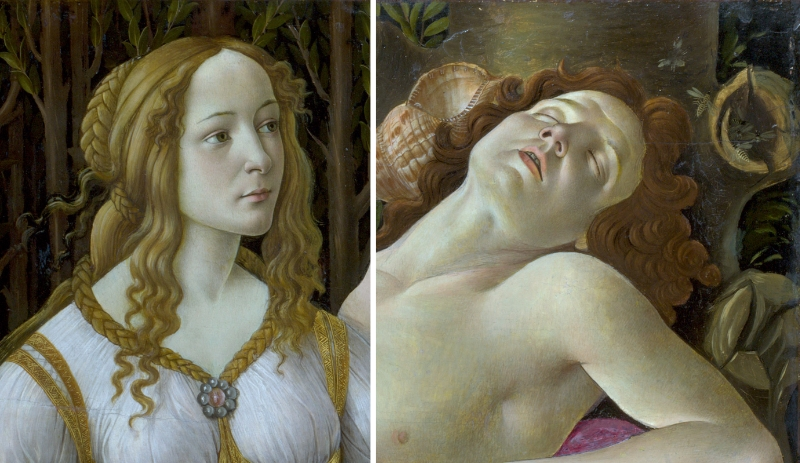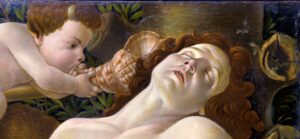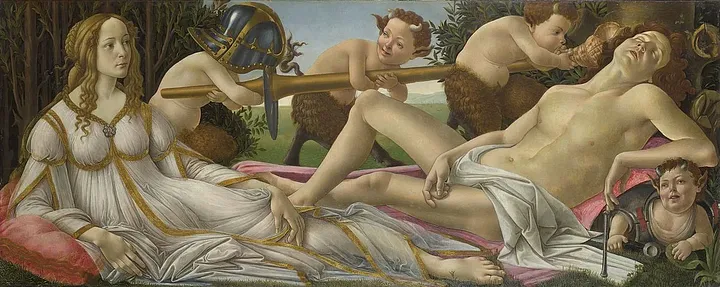
In the painting Venus and Mars, by Sandro Botticelli, we can see Venus motionless in her gentle and graceful pose, dressed in a noble long robe. Venus appears to be observing the scene and the figure of Mars carefully, she is straight, comfortable on her pillows, and well placed.
On the other hand, instead, Mars, its opposite, usually well dressed even in cuirass and armour, lies helpless naked, with its head bowed (just like Venus in the painting of Spring — see the explanation below) and appears in the throes of sleep, ecstasy to some psychotropic substance (see in fact the fruit in the hands of the little faun below him), or in the release phase that follows the orgasm.
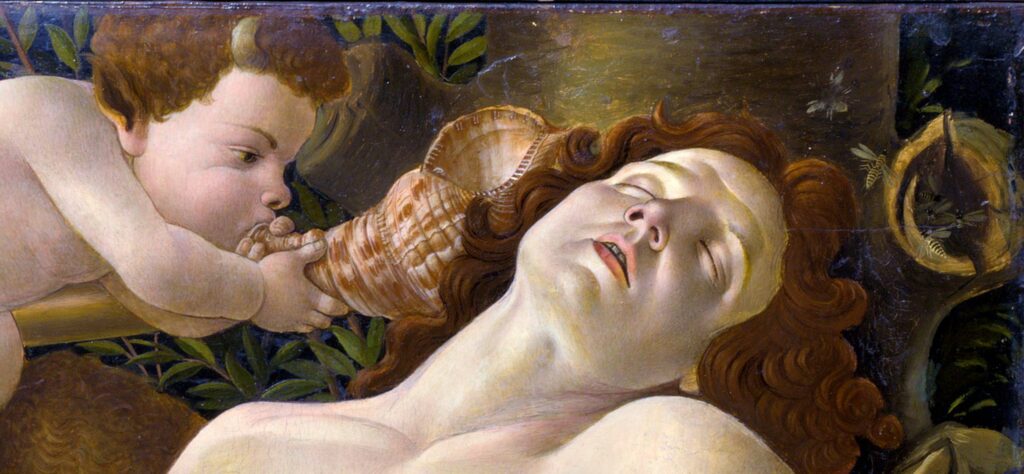
Mars is so exiled from himself that the little fauns play with his weapons and a faun plays the shell (usually used as a call for battle) in his ear, without him even realizing it.
He is completely absorbed, absent, taken by the attraction of Venus. We can almost say that in this painting the presence and attitude of Venus is Martian and the attitude of Mars is Venusian.
But the direction and verse of the spear really seem to indicate the radiation movement of the attraction from Venus towards Mars, like an arrow launched by Venus — however launched in full yin energy, or in immobility, because Venus does not need to move, unlike Mars, but only to stay, in order to express herself and her power.
There is another interesting detail, and it is the small fruit under the hand of the faun at the bottom right: that small fruit is a famous psychotropic fruit, maybe the Jimsonweed (in Italian “Stramonio”), a plant known for its aphrodisiac and hallucinogenic power, commonly also defined as “witches’ herb”, because it was used in European pagan rituals, of Indian tantric origin.
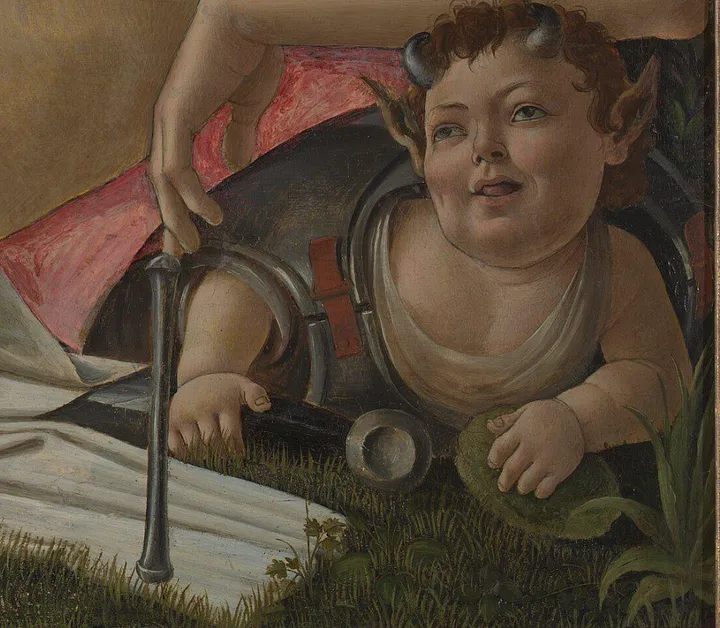
Psychological effects of Stramonio include confusion, euphoria, and delirium.
Botticelli as a Renaissance man, zodiac sign Pisces, certainly had knowledge of plants, of their symbolism and their use for divination.
Then with time the small details are slowly forgotten through the loss of consciousness and knowledge. And only those who still know how to “see” still know how to understand.
Giulia Maria Miscioscia
